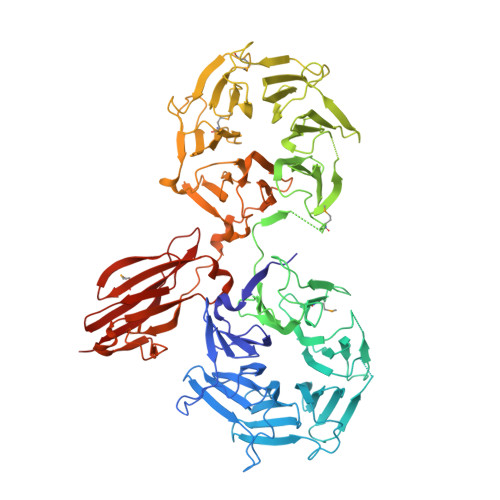Crystal structures of apparent saccharide sensors from histidine kinase receptors prevalent in a human gut symbiont.
Zhang, Z., Liu, Q., Hendrickson, W.A.(2014) FEBS J 281: 4263-4279
- PubMed: 24995510
- DOI: https://doi.org/10.1111/febs.12904
- Primary Citation of Related Structures:
3OTT, 3V9F - PubMed Abstract:
The adult human gut is a complicated ecosystem in which host-bacterium symbiosis plays an important role. Bacteroides thetaiotaomicron is a predominant member of the gut microflora, providing the human digestive tract with a large number of glycolytic enzymes. Expression of many of these enzymes appears to be controlled by histidine kinase receptors that are fused into unusual hybrid two-component systems that share homologous periplasmic sensor domains. These sensor domains belong to the third most populated (HK3) family based on a previous unpublished bioinformatics analysis of predicted histidine kinase sensors. Here, we present the crystal structures of two sensor domains representative of the HK3 family. Each sensor is folded into three domains: two-seven-bladed β-propeller domains and one β-sandwich domain. Both sensors form dimers in crystals, and one sensor appears to be physiologically relevant. The folding characteristics in the individual domains, the domain organization, and the oligomeric architecture are all unique to HK3 sensors. Sequence analysis of the HK3 sensors indicates that these sensor domains are shared among other signaling molecules, implying combinatorial molecular evolution.
Organizational Affiliation:
Department of Biochemistry and Molecular Biophysics, Columbia University, New York, NY, USA.















